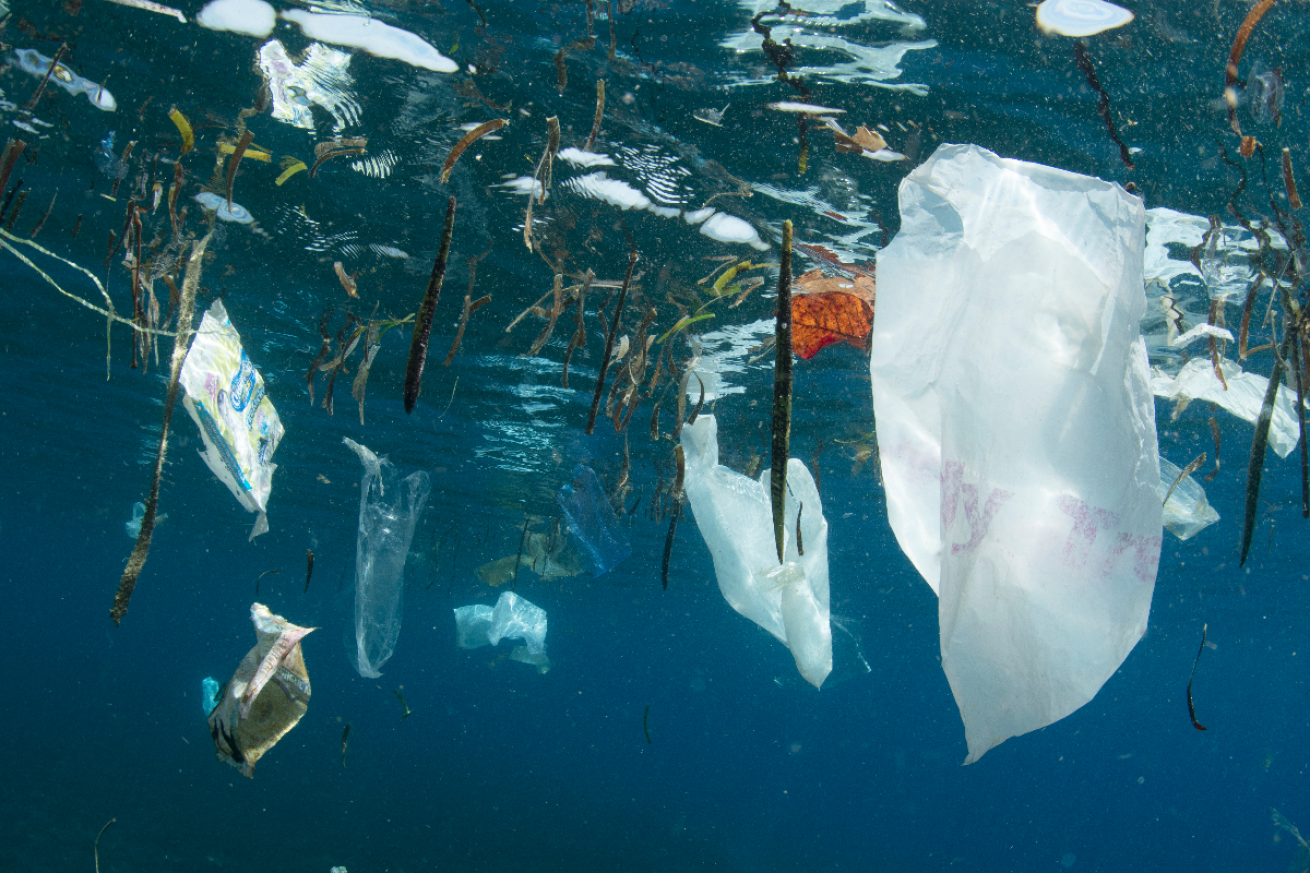50 Years of Garbage and We Still Don’t Know What to Do

Shutterstock.com/Shane GrossPlastic bags and bottles and other assorted trash litter the ocean floor and blanket the ocean surface in the Great Pacific Garbage Patch.
50 years ago, scientists discovered the Great Pacific Garbage Patch. Unfortunately, since then, waste management and plastic consumption have continued to skyrocket. What could the next 50 years bring?
On February 10, 1973, Science News published a story about setting sail into a plastic sea. The scientists, on an oceanic voyage in the Central North Pacific in Aug. 1972 became “startled about the number of manmade objects littering the ocean surface,” the short excerpt describes.
They were 600 miles from Hawaii, the nearest major civilization, and far off major shipping lanes; nevertheless, they recorded 53 man made objects in 8.2 hours of viewing. More than half were plastic. The scientists did what scientists do, quantifying and extrapolating from their data; they estimated that 5 million to 35 million plastic bottles were adrift in the North Pacific.
Related Reading: Six Ways to Tackle Plastic Pollution Every Day
This area, this “plastic soup,” would become known as the Great Pacific Garbage Patch. More Than Green also calls it the Pacific Trash Vortex, a nod to the unfortunate aggregating effect that ocean currents have on floating trash. Today, “the patch is characterized by exceptionally high relative concentrations of pelagic plastics, chemical sludge and other debris that have been trapped by the currents of the North Pacific Gyre,” the report says.
The trash phenomenon, located halfway between Hawaii and California, is also referred to as “the seventh continent,” the report says, because it is larger than many countries. Just how big? The Ocean Cleanup estimates a surface area of 1.6 million square kilometers – an area twice the size of Texas and three times the size of France. The non-profit focuses on innovative ways to clean up the garbage patch and to stop trash from entering our waterways further upstream.
Related Reading: How to Safely Collect Marine Debris
In fact, the Great Pacific Garbage Patch is the largest of the five offshore plastic accumulation zones in the world’s oceans, reports The Ocean Cleanup. Additionally, a Science News update to their article from 50 years ago reports that the vortex has grown since its discovery and estimates that it now contains 1.8 trillion pieces of plastic.
80% of waste comes from land, and 20% falls from ships, More Than Green reports. Correspondingly, The Ocean Cleanup estimates that 1.15 to 2.41 million tonnes of plastic enter the ocean each year from rivers. Since many plastics are buoyant, they won’t sink—transported over great distances by the water’s movement. Eventually, converging currents accumulate them at the patch. Therefore, “we can deduce this island is formed mainly by the lack of global awareness in pouring and recycling plastic waste processes,” More Than Green says.
Related Reading: Divers Clean Up Almost 1.7 Tons of Marine Debris in California
Now, half-a-century after its discovery, marine biologists are worried about how all this garbage and plastic is disrupting ocean ecosystems at all levels, the Science News update says. For example, species have hitchhiked on trash to cross into new territories—something that could lead to invasive species influxes. They’re also concerned about microplastics that break apart and get eaten by filter feeders. The material doesn’t biodegrade, instead accumulating up the food chain into the guts of large predators—including humans.
“Once these plastics enter the gyre, they are unlikely to leave the area until they degrade into smaller microplastics under the effects of the sun, waves and marine life,” The Ocean Cleanup says. “As more and more plastics are discarded into the environment, microplastic concentration in the Great Pacific Garbage Patch will only continue to increase.”










